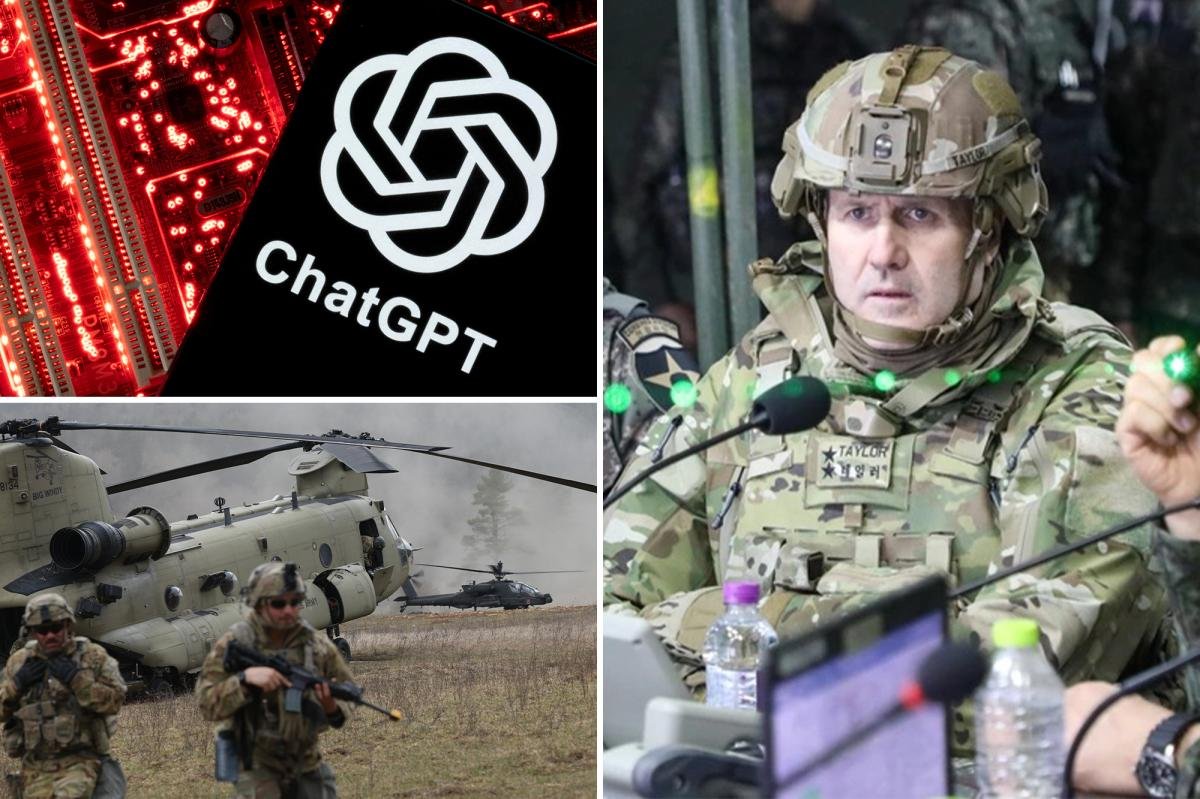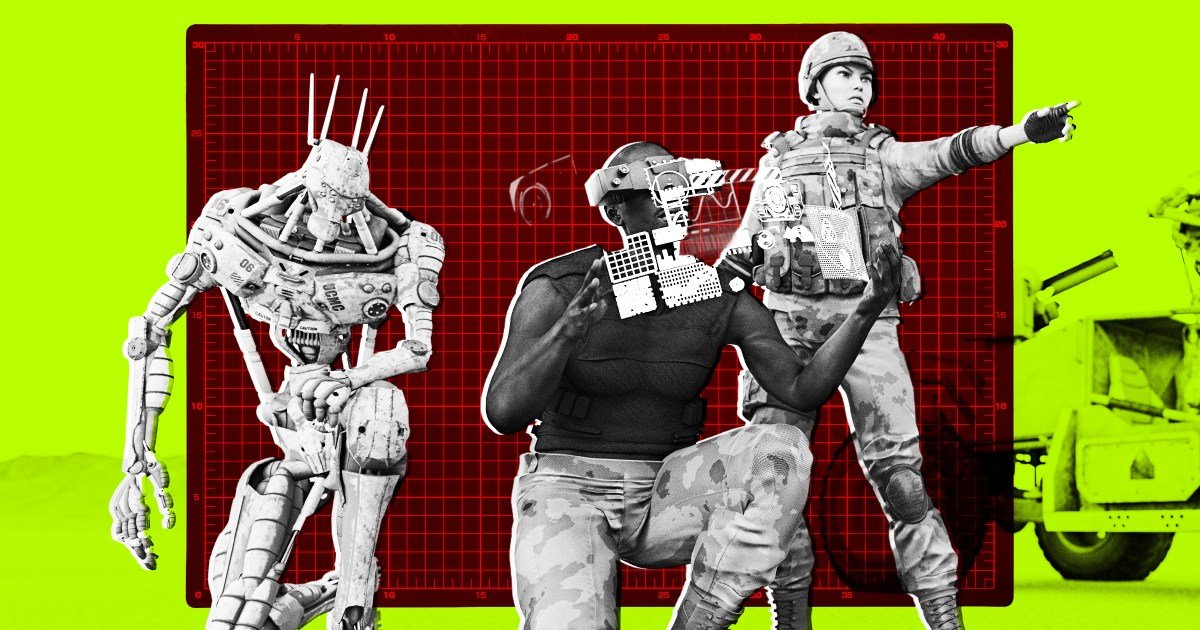The Rise of AI in Military Strategy
The integration of Artificial Intelligence (AI) into military strategy is transforming modern warfare by enhancing decision-making, improving efficiency, and maintaining a tactical edge. Traditionally reliant on human intuition, military strategies are now benefiting from AI’s ability to process vast data quickly and accurately, crucial for rapid response scenarios like cyber defense and battlefield management. AI also predicts threats by analyzing patterns, such as detecting troop movements via satellite imagery, allowing proactive risk mitigation. In logistics, AI optimizes resource allocation, ensuring operational readiness and reducing waste. Autonomous systems, including drones, expand tactical options, offering flexibility and precision in missions while reducing personnel risk. Despite these advancements, challenges remain, such as ethical concerns over autonomous weapons and ensuring AI system security against exploitation by adversaries. Overall, AI is significantly reshaping military operations and strategies, marking a profound shift in warfare’s future.
Historical Context: AI in Defense
The evolution of AI in defense began in the mid-20th century, gaining momentum during the Cold War as nations sought superior military capabilities. During this period, significant investments were made in developing computer systems to enhance decision-making and military efficiency. In the 1980s and 1990s, the U.S. Department of Defense (DoD) explored AI technologies like expert systems and early neural networks for logistics and strategic planning, simulating human reasoning to provide data-driven recommendations. The 21st century saw a surge in AI research, driven by advancements in computing and data availability. The military’s interest in AI grew, focusing on surveillance, reconnaissance, and autonomous vehicles, with DARPA funding numerous AI projects. Recently, AI has become central to military modernization, with applications in threat detection, cyber defense, and battlefield decision support, including AI-enabled drones and robotics. This trajectory underscores AI’s integral role in modern military strategies and its potential to reshape future warfare.
Current Trends in Military AI Adoption
The U.S. military is increasingly integrating artificial intelligence (AI) to maintain a competitive edge in modern warfare, focusing on speed, precision, and data-driven decisions. AI is primarily used for Data Analysis and decision support, processing vast amounts of operational data to provide actionable insights and enable faster decision-making. It enhances unmanned systems like drones with AI-driven navigation and targeting, allowing high autonomy and reducing risks to personnel. In cybersecurity, AI detects and responds to sophisticated threats in real-time, safeguarding critical infrastructure. AI-powered training simulations create dynamic environments for personalized soldier training, improving readiness. Additionally, AI optimizes logistics and supply chain management through predictive analytics, ensuring efficient resource allocation and distribution. These trends underscore AI’s transformative role in military operations, spanning from tactical to strategic levels, reshaping capabilities and strategies for future conflicts.
ChatGPT: From Civilian Use to Military Application
ChatGPT, initially a civilian tool for tasks like customer service and content creation, is now being adapted for military use by the U.S. Army. This transition involves leveraging ChatGPT’s natural language processing capabilities to enhance military operations. The AI is being explored to automate routine communications, allowing personnel to focus on critical missions. Additionally, ChatGPT’s data processing abilities are used for intelligence purposes, analyzing complex data sets to identify patterns crucial for operational planning and strategy development. In training, the Army uses ChatGPT to create interactive modules simulating real-world scenarios, improving learning efficiency and consistency. Security remains a top priority, requiring robust cybersecurity measures to protect sensitive information and ensure compliance with military protocols. This adaptation of ChatGPT highlights AI’s versatility and potential to transform military operations, making them more efficient and informed.
Understanding ChatGPT Technology
ChatGPT, developed by OpenAI, is a language model that generates human-like text responses using a Transformer neural network. Introduced by Vaswani et al. in 2017, this architecture allows ChatGPT to process and generate fluent natural language by understanding context and nuances (Source 1). Its effectiveness stems from training on diverse internet text, enabling it to cover a wide range of topics for applications like drafting emails and explaining complex subjects. However, it lacks true understanding, merely predicting text continuations based on learned patterns (Source 2).
ChatGPT is further refined through “fine-tuning,” using supervised and reinforcement learning to improve performance in specific domains. This adaptability makes it valuable for personalized interactions across various industries (Source 3). It maintains coherent conversations through attention mechanisms, though it can sometimes produce errors due to reliance on pre-trained data. Users should verify critical information (Source 4). ChatGPT is a significant AI advancement, offering versatile text generation while requiring cautious use.
Transitioning ChatGPT for Military Use
The U.S. Army’s integration of AI technologies like ChatGPT signifies a pivotal change in military operations. Transitioning ChatGPT for defense requires several adaptations to meet stringent military demands.
Customization and Security: The AI must be tailored to military applications, trained on data sets with military language and protocols for relevant responses. Unlike civilian use, military applications necessitate deep integration with defense terminologies. Security is paramount, requiring military-grade infrastructure and robust encryption to protect sensitive data.

Operational Integration: ChatGPT must be embedded into existing military systems for command, control, logistics, and communications, ensuring seamless interoperability. Its data processing capabilities can enhance situational awareness and strategic planning. Additionally, its language processing can aid multilingual communication, improving coordination with allies.
Training and Human-AI Collaboration: Personnel must be trained to effectively collaborate with AI, integrating AI insights into decision-making without over-reliance. Human oversight remains crucial, ensuring ethical considerations in operations.
In summary, transitioning ChatGPT for military use involves customization, security, integration, and training to enhance military capabilities while ensuring operational integrity.
How U.S. Army Generals Are Utilizing AI
U.S. Army generals are increasingly integrating AI into strategic and operational frameworks to enhance decision-making, combat readiness, and logistics. AI’s advanced data analytics process vast amounts of information from sources like satellites and drones, providing real-time insights for identifying threats and making informed decisions. In logistics, AI optimizes supply chains with predictive algorithms, ensuring efficient resource management and reducing waste. AI-driven simulations in training offer realistic combat scenarios, adapting to user performance for personalized experiences that improve readiness. Autonomous systems, such as UAVs and ground robots, use AI for reconnaissance and combat operations, extending operational reach and reducing risks to soldiers. Additionally, AI enhances cybersecurity by detecting and neutralizing cyber threats in real-time. By incorporating AI into various military operations, the U.S. Army maintains a competitive edge in modern warfare, characterized by speed, precision, and adaptability.
AI in Strategic Planning and Decision-Making
AI is transforming strategic planning and decision-making in the U.S. Army by enhancing data analysis and operational capabilities. AI systems efficiently process complex datasets, offering real-time insights crucial for mission success. In predictive analytics, AI uses Machine Learning to forecast threats and operational outcomes, allowing military leaders to anticipate enemy movements and adapt strategies for tactical advantage. AI-driven simulations enable planners to test strategies in virtual environments, refining them without the risks of real-world exercises, thus accelerating and improving decision accuracy. AI also optimizes resource allocation by analyzing logistical data to ensure efficient distribution of supplies, personnel, and equipment. This is vital in dynamic environments where resource efficiency is crucial. Additionally, AI integrates data from sources like satellite imagery and reconnaissance reports, enhancing situational awareness and coordinated decision-making. Overall, AI is an essential tool in the Army’s strategic processes, empowering leaders to make informed, effective decisions, thereby boosting operational effectiveness (Sources 1, 2, 3, 4).
Enhancing Communication and Coordination
AI integration in U.S. Army operations has transformed communication and coordination, streamlining complex tasks and improving decision-making. AI enhances communication by offering real-time translation services, crucial for overcoming language barriers in multinational operations. These tools enable seamless interaction between coalition partners and local populations. Additionally, AI improves coordination among military units by analyzing data from sources like satellite imagery and drone footage, presenting it coherently to commanders. This comprehensive battlefield overview aids in better troop and resource management, reducing miscommunication and logistical errors. AI also optimizes internal military communications by prioritizing urgent messages, ensuring critical information reaches the right personnel swiftly. Furthermore, AI can predict potential communication breakdowns, suggesting preventive measures to maintain network integrity. Overall, AI’s incorporation into military strategies marks a significant advancement, enhancing operational capabilities and ensuring successful mission outcomes. As AI technology evolves, its role in military operations will continue to grow.
AI in Training and Simulation
The integration of AI in military training has transformed how the U.S. Army prepares its personnel for combat. AI technologies create realistic, adaptable training environments that enhance soldier readiness. AI-driven simulations mimic real-world combat, offering dynamic scenarios that evolve with trainee actions, improving decision-making and adaptability. AI personalizes training by analyzing data to tailor programs to individual soldier needs, optimizing preparation and unit performance. Additionally, AI enhances VR and AR training platforms, providing immersive, risk-free combat experiences with realistic interactions. AI also aids in after-action reviews by analyzing data to assess performance and refine training methods. Overall, AI’s incorporation in training and simulation significantly advances military preparedness, equipping soldiers to better face modern warfare challenges.

Benefits of AI in Military Operations
The integration of artificial intelligence (AI) into military operations is revolutionizing traditional paradigms and enhancing capabilities. The U.S. Army and other military organizations are leveraging AI for strategic and tactical advantages. Key benefits include:
Enhanced Decision-Making: AI processes vast data quickly, offering real-time insights and predictive analytics crucial for timely decisions in dynamic combat environments.
Improved Situational Awareness: AI synthesizes data from various sources into comprehensive models, providing commanders with a clearer battlefield understanding to anticipate enemy movements.
Operational Efficiency: AI automates routine tasks, optimizing logistics and freeing human resources for strategic duties.
Force Multiplier Effect: AI enables smaller units to achieve significant impacts using autonomous systems like drones for reconnaissance and offensive operations.
Risk Reduction: AI minimizes human exposure in high-risk scenarios by deploying autonomous systems in dangerous environments.
Cyber Defense: AI detects and responds to cyber threats, protecting sensitive military data.

Kaynak: www.businessinsider.com Training and Simulation: AI-driven simulations offer adaptive training, enhancing soldier readiness.
AI is a strategic enabler, enhancing military effectiveness, efficiency, and safety, poised to expand its role in future warfare.
Increased Efficiency and Accuracy
AI is transforming the U.S. Army by enhancing efficiency and accuracy in military operations. It processes vast data quickly, crucial for timely, accurate information in missions. AI analyzes satellite imagery and sensor data faster than human analysts, enabling commanders to make informed decisions swiftly, thus boosting operational tempo. AI’s machine learning algorithms improve targeting accuracy, predicting adversary movements and identifying threats precisely, reducing collateral damage. In logistics, AI optimizes supply chains, routes, and inventory management, ensuring troops receive necessary resources promptly, maintaining readiness. Additionally, AI simulations aid in training and strategic planning by identifying weaknesses and suggesting improvements, enhancing strategic initiatives’ accuracy. Overall, AI’s integration has significantly improved the Army’s efficiency and accuracy in data processing, predictive analytics, logistics, and strategic planning, equipping it to operate at the forefront of modern warfare.
Real-Time Data Analysis and Intelligence Gathering
In modern military operations, the U.S. Army relies on artificial intelligence (AI) for real-time data analysis and intelligence gathering, crucial for mission success. AI systems process vast data from sources like satellite images, drone footage, and communications intercepts using machine learning algorithms, identifying patterns and anomalies often missed by humans. This capability aids in understanding enemy movements, predicting threats, and making strategic decisions.
AI excels in integrating diverse data sources into a comprehensive intelligence picture, enhancing battlefield assessments and enabling agile responses. Its predictive capabilities allow for forecasting enemy actions and suggesting countermeasures, aiding both offensive and defensive strategies.
Beyond immediate tactical benefits, AI contributes to long-term strategic planning by offering insights into geopolitical developments. By processing data in real time, military leaders make informed decisions with up-to-date intelligence, minimizing risks from outdated information. The integration of AI marks a significant shift in military operations, enhancing operational effectiveness and maintaining technological leadership in defense.
Risk Reduction and Safety Enhancements
The integration of AI technologies into military operations is revolutionizing the U.S. Army’s approach to risk management and safety. AI significantly reduces risks in combat and non-combat scenarios, ensuring personnel safety and mission success. A key aspect of AI’s contribution is predictive analytics, which processes vast data to foresee threats, allowing commanders to make informed decisions and avoid potential dangers. AI-driven systems analyze intelligence like satellite imagery to predict enemy movements, enabling preemptive resource deployment. Additionally, AI automates dangerous tasks, employing robotics and unmanned systems for reconnaissance, bomb disposal, and supply delivery, keeping soldiers out of harm’s way. AI also enhances equipment maintenance through predictive algorithms, preventing failures and ensuring operational safety. Furthermore, AI facilitates soldier training via advanced simulations, allowing mission rehearsals in a risk-free virtual environment. Overall, AI is crucial in transforming risk management and safety protocols, solidifying its role as an essential tool in modern military operations.

Challenges and Concerns with Military AI
Integrating AI into military operations presents significant challenges, primarily ethical concerns, reliability, and logistical issues. The use of autonomous weapons, or “killer robots,” raises ethical dilemmas about accountability for unintended harm and adherence to international law. The potential for AI to make autonomous life-and-death decisions is a profound issue yet to be fully resolved. Reliability is another concern, as AI systems can be prone to errors, biases, and adversarial attacks, which adversaries might exploit, leading to mission failures. Logistically, integrating AI with existing military infrastructure requires costly upgrades and retraining, as legacy systems may not be compatible with new technologies. The rapid pace of AI development further risks a technology gap, challenging personnel to keep abreast of advancements. Data privacy is critical, as AI systems need vast datasets, raising the risk of data breaches and exposure of classified information. Maintaining human oversight is essential to prevent over-reliance on AI, ensuring operations remain under competent control. Addressing these issues is vital for AI’s responsible military deployment.
Ethical and Legal Considerations
The integration of AI into military operations, such as those by the U.S. Army, involves critical ethical and legal considerations. A primary ethical concern is AI’s potential to autonomously make decisions that could harm human life, necessitating strict guidelines to align with international humanitarian law (Source 1). Accountability for AI-driven actions is complex, requiring clear structures to hold AI developers and military commanders responsible (Source 2). AI deployment also raises privacy issues, as systems processing vast data might infringe on privacy rights, necessitating robust data protection and adherence to privacy laws (Source 3). Legally, AI use must comply with international laws, including the Geneva Conventions, ensuring principles of distinction and proportionality to minimize civilian harm (Source 4). Transparency and oversight in AI development and deployment are crucial, involving stakeholders to create ethical frameworks, especially regarding AI in cyber warfare and its legal challenges (Source 5). Balancing AI’s military potential with ethical responsibility is essential (Source 6).
Cybersecurity Risks
As the U.S. Army adopts AI technologies, cybersecurity risks become a significant concern. AI systems, despite their advanced capabilities, introduce vulnerabilities that adversaries can exploit. A primary risk involves adversarial attacks, where malicious actors manipulate input data to deceive AI algorithms, leading to erroneous outcomes or system malfunctions. Such attacks can compromise decision-making processes, heavily reliant on AI for real-time data analysis and strategic planning.
Moreover, AI usage in military operations requires handling vast amounts of sensitive data, making it a target for cyber espionage. The interconnected nature of AI systems means a breach in one component could expose entire networks, revealing critical military strategies. AI’s dependence on machine learning models presents another challenge, as tampered training datasets can result in ‘data poisoning,’ leading to flawed AI decisions.
Traditional cybersecurity measures may not suffice for AI-driven threats, necessitating advanced, AI-specific defense mechanisms. The U.S. Army must balance leveraging AI’s capabilities with maintaining robust cybersecurity to safeguard operations against evolving threats.
Dependence on Technology
The U.S. Army’s increasing reliance on artificial intelligence (AI) in military operations marks a transformative shift, driven by the need for enhanced efficiency, precision, and speed. AI’s ability to rapidly process vast data provides commanders with real-time insights and predictive analytics, crucial for information dominance in modern warfare. AI systems analyze satellite imagery and intelligence inputs to identify threats and suggest strategies, and they optimize supply chain operations and predict equipment maintenance needs, ensuring troops are mission-ready. However, this dependence introduces vulnerabilities, such as potential cyber attacks targeting AI systems and ethical concerns about machines making life-and-death decisions. To mitigate these risks, the Army is investing in cybersecurity and developing protocols for human oversight of AI processes, aiming for a balance between technological advancement and ethical accountability. The Army’s efforts to integrate AI responsibly reflect a commitment to maintaining a technological edge while upholding military principles and values.
Future Prospects of AI in the U.S. Army
The future of AI in the U.S. Army is set to transform military operations, offering enhanced decision-making, efficiency, and strategic advantages. A significant focus is on developing autonomous systems like vehicles and drones for reconnaissance, logistics, and combat, which reduce risks to soldiers and increase operational speed. AI is also revolutionizing intelligence, surveillance, and reconnaissance by processing large data volumes for real-time insights, improving situational awareness and decision-making. In cyber defense, AI systems can swiftly detect and respond to sophisticated threats, protecting military infrastructure and communications. Additionally, AI-powered simulations offer adaptive training environments, enhancing soldier preparedness and allowing for safe tactical experimentation. Despite these advancements, ethical concerns and accountability remain critical challenges. The U.S. Army is committed to ethical AI development, adhering to standards and laws. Overall, AI is poised to significantly enhance military capabilities, with ongoing research and development promising new levels of effectiveness and safety.

Potential Developments and Innovations
The integration of artificial intelligence (AI) into U.S. Army operations promises to revolutionize military capabilities. Key developments include autonomous systems, such as drones for reconnaissance and combat, which reduce human risk and provide real-time data (Source 1). AI’s role in predictive analytics can optimize logistics, predict equipment failures, and ensure resource availability, enhancing efficiency and reducing costs (Source 2). In cybersecurity, AI can detect and respond to threats by identifying anomalies in network traffic, protecting critical infrastructure (Source 3). AI also improves decision-making by synthesizing battlefield data for strategic insights and simulating scenarios for tactical planning (Source 4). Additionally, AI-driven training simulations offer realistic, risk-free environments for soldiers, adapting to their actions for personalized learning (Source 5). As AI advances, ethical use and regulatory frameworks are vital to maintain trust and accountability, emphasizing the need for comprehensive guidelines (Source 6). Overall, AI innovations are poised to significantly enhance U.S. Army operations.
Collaboration with Tech Companies and Research Institutions
The U.S. Army’s integration of artificial intelligence (AI) relies on collaborations with tech companies and research institutions to stay at the forefront of technological advancements. Key partnerships include tech giants like Microsoft and Google, which provide AI and machine learning tools. For instance, Microsoft’s Azure enhances data analysis for real-time decision-making in combat scenarios. Specialized AI firms develop military-specific applications to predict threats and optimize logistics. Collaborations with institutions like MIT and Carnegie Mellon University contribute advanced AI research, focusing on autonomous systems and cybersecurity. These partnerships involve joint development and testing of AI systems through cooperative research and development agreements (CRADAs), ensuring robust and reliable technologies for modern warfare. The Army also participates in AI consortia and forums to exchange knowledge and identify emerging trends. These collaborations are essential for the Army to harness AI’s potential and remain agile in facing future battlefield challenges.
Preparing for AI-Driven Warfare
The U.S. Army is transforming its approach to warfare by integrating artificial intelligence (AI) into its operations, focusing on autonomous systems to enhance decision-making and situational awareness. AI-driven reconnaissance tools can process data more efficiently than humans, providing a comprehensive understanding of the battlefield. Additionally, AI is improving logistics by predicting equipment failures and optimizing maintenance, which boosts readiness and reduces costs. Training is also evolving with AI, offering realistic simulations that adapt to soldiers’ actions, crucial for developing necessary skills for future conflicts. Ethical considerations are paramount, with the Army engaging AI ethics experts to ensure compliance with international laws and maintain human oversight in AI operations. Collaborations with tech companies and academic institutions are accelerating AI advancements, ensuring military applications remain innovative. The Army’s strategic integration of AI aims to enhance operational capabilities, efficiency, and uphold ethical standards, maintaining a strategic advantage in evolving warfare landscapes.
Conclusion: The Impact of AI on Military Leadership
The integration of artificial intelligence (AI) into military leadership is transforming defense strategies and decision-making processes. AI’s ability to rapidly process vast data allows military leaders to make informed decisions with unprecedented speed and precision, critical in modern warfare’s fast-paced environment. This technology provides insights into complex operational scenarios, enhances threat assessment, and optimizes resource allocation. AI also reshapes leadership dynamics by enabling collaborative and adaptive strategies through simulations and predictive analytics, fostering proactive leadership and Innovation. Additionally, AI enhances communication and coordination within military hierarchies by automating routine tasks and streamlining information flow, thus improving operational efficiency. However, AI adoption presents challenges, such as ethical concerns over autonomous systems making life-and-death decisions. Military leaders must balance AI’s benefits with ethical standards, ensuring responsible use. Overall, AI is revolutionizing military leadership by enhancing decision-making, fostering innovation, and improving efficiency, but requires vigilant management to align with strategic and moral imperatives.
Summary of Key Benefits and Challenges
The integration of AI, such as ChatGPT, into U.S. Army operations offers notable benefits and challenges, reshaping military strategies.
Benefits include:
- Enhanced Decision-Making: AI processes vast data quickly, aiding commanders in real-time decisions by identifying patterns or anomalies missed by humans.
- Operational Efficiency: Automating routine tasks allows personnel to focus on complex activities, improving efficiency and reducing human error.
- Predictive Maintenance: AI predicts equipment failures, minimizing downtime and maintaining readiness.
- Enhanced Training: AI-driven simulations and personalized training improve soldiers’ preparedness and adaptability.
Challenges include:
- Data Security: Handling sensitive data raises concerns about breaches, necessitating robust cybersecurity.
- Ethical Concerns: AI in combat poses ethical and legal challenges, especially with autonomous weapons.
- Reliability and Trust: Trust in AI is crucial, as malfunctions could have serious consequences.
- Integration: Incorporating AI into military systems requires significant infrastructure changes and ensuring interoperability.
AI’s benefits are substantial, but addressing security, ethics, trust, and integration challenges is crucial for successful implementation.
The Evolving Role of Generals in an AI-Enhanced Army
The integration of AI into military operations is transforming U.S. Army generals’ roles, enhancing decision-making and operational effectiveness. Generals now utilize vast data from satellites, drones, and sensors, with AI processing this information rapidly to provide actionable insights. This capability enables more informed strategic decisions and quicker threat responses. AI also aids in planning by using predictive analytics to forecast outcomes, allowing generals to evaluate scenarios and choose effective strategies. Additionally, generals are involved in the ethical and regulatory aspects of AI deployment, ensuring compliance with international laws and addressing moral implications. This requires understanding AI’s capabilities and limitations while maintaining human oversight. Collaboration with technology experts is crucial, as generals work with data scientists and engineers to ensure AI systems are secure and aligned with military objectives. As AI evolves, generals will continue adapting to new challenges, leveraging AI to enhance strategic capabilities and operational efficiency in a technology-driven battlefield.
Summary
The article explores the innovative integration of artificial intelligence by U.S. Army generals, extending from the capabilities of ChatGPT to advanced combat applications. It highlights how AI is transforming military operations by enhancing decision-making, logistics, and strategic planning. The Army is leveraging AI for real-time data analysis, predictive maintenance, and autonomous systems, which streamline operations and improve efficiency. This technological leap not only augments human capabilities but also addresses emerging threats with greater precision and adaptability. The article further discusses the ethical considerations and challenges of implementing AI in military contexts, emphasizing the importance of balancing technological advancement with responsible use. Ultimately, this AI revolution is reshaping the future of warfare, marking a significant shift in the Army’s operational landscape.
